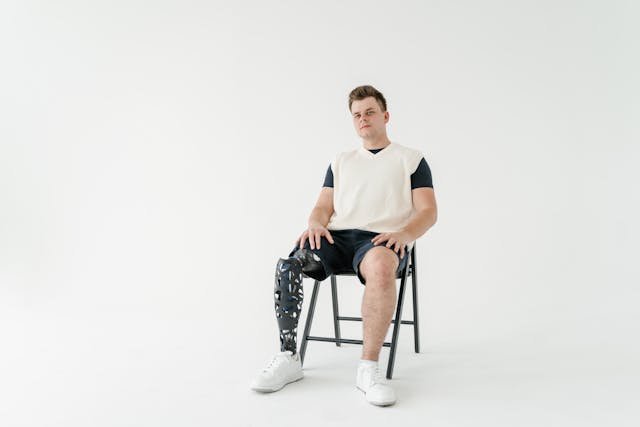For anyone going through an amputation, the first few weeks after surgery can feel uncertain and overwhelming. But what if taking those first steps—literally—could start much earlier than expected? Across India, many individuals are proving that early prosthetic use doesn’t just help the body recover faster. It can also uplift the mind, restore independence, and completely change the way a person feels about their future.
At Robobionics, we’ve witnessed powerful transformations firsthand. With timely prosthetic fitting, guided care, and emotional support, our users have overcome fear, discomfort, and doubt to find strength and stability again. This article shares some of their journeys—real people, real challenges, and truly inspiring results. Each one proves that starting early, even with a temporary prosthetic, can make a life-changing difference.
Aarav’s Journey: Finding His Footing Just Weeks After Surgery
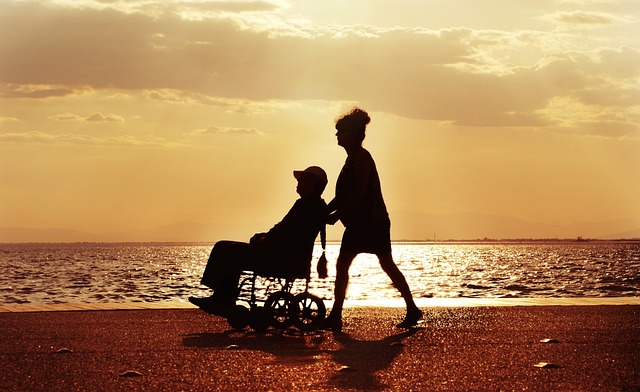
When Aarav, a 45-year-old construction supervisor from Pune, lost his lower leg in a roadside accident, the news hit his family hard. As the main earner, he worried more about getting back to work than anything else. He had always been active, always on his feet. Sitting in a hospital bed, unsure how life would look now, he felt stuck and anxious.
At Robobionics, we met Aarav during his first post-operative week. We explained how an immediate fit prosthetic could help him start walking again—safely, gently, and under supervision. At first, he was skeptical. “Won’t it hurt? Isn’t it too soon?” But with the guidance of our prosthetist and physiotherapy partner, he agreed to try. Within two weeks, he was standing and taking small steps inside his home with a walker.
The change in Aarav was remarkable. His mood lifted. His appetite returned. And most importantly, he felt like he was moving forward. With early walking, his body healed faster, his limb shaped better for future fitting, and he built up strength in his muscles. Three months later, he transitioned into a custom definitive prosthetic and returned to supervising work on-site. He now encourages others to start early too. “Don’t wait if you don’t have to,” he says. “The sooner you start moving, the better you feel.”
Meera’s Story: Regaining Confidence Through Early Movement
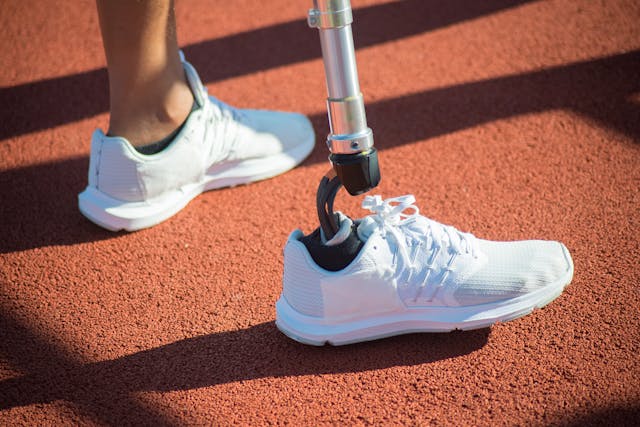
Meera, a retired teacher from Kochi, underwent an above-knee amputation due to complications from diabetes. At 62, she was not only dealing with the physical change but also the emotional weight of losing a part of herself. For weeks, she stayed in her room, avoiding visitors, unsure if she would ever walk again or feel like herself.
Her daughter reached out to Robobionics after hearing about our early rehabilitation program. We arranged a home visit and introduced Meera to a simple, lightweight post-operative prosthetic that she could try during her recovery. At first, she resisted. She didn’t feel ready. But with gentle encouragement and a step-by-step approach, Meera agreed to stand with support. That moment changed everything.
Over the next few weeks, Meera began walking short distances indoors, then around her garden. With each movement, her confidence returned. She smiled more. She started reading aloud to her grandchildren again. The prosthetic didn’t just help her walk—it reminded her of who she was. Today, Meera uses a microprocessor knee system and attends senior group sessions weekly. She says early use gave her more than balance—it gave her a reason to get up every morning.
Rajesh’s Recovery: Back to Business with a Strong Start
Rajesh, a 34-year-old marketing executive from Mumbai, had a below-knee amputation following a motorbike accident. He was young, ambitious, and didn’t want to lose his career momentum. But lying in a hospital bed, surrounded by unanswered questions, he felt like everything had come to a halt. He had clients waiting, a team depending on him, and no idea how fast he could return.
When Rajesh came to Robobionics, we introduced him to the concept of early prosthetic use and how it could help him get back on his feet sooner. We explained the benefits clearly—better limb shaping, quicker strength recovery, and a smoother transition into a permanent prosthetic. With his consent, we began fitting him with a post-operative system within ten days of surgery.
Rajesh approached therapy like he approached work—with focus and discipline. Within four weeks, he was walking unaided indoors and making short trips outside. He returned to his office on a part-time basis just six weeks after his surgery. Not only was he moving again, but he also became a voice for accessibility at his company. “Early prosthetic use wasn’t just a treatment—it was a strategy,” he says. “It gave me control over my time, my work, and my confidence.”
Anjali’s Return to Teaching: From Hospital Bed to Classroom
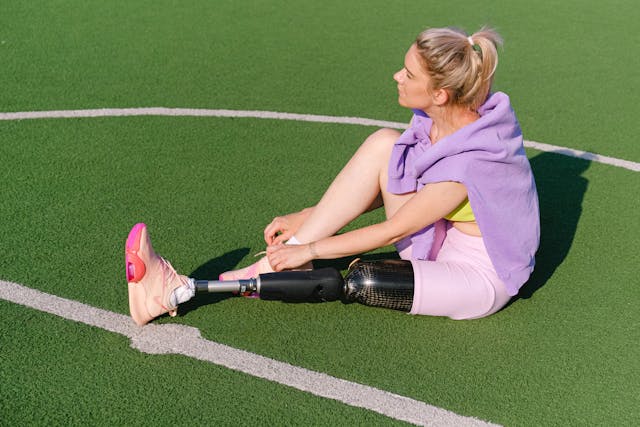
Anjali, a 39-year-old schoolteacher from Nagpur, had a transfemoral amputation following cancer surgery. She loved her work and her students, but after her operation, she feared she would never be able to stand in front of a classroom again. She struggled with depression, worried about how her students would see her, and hesitated even to speak about prosthetics.
Her oncologist referred her to Robobionics, where we spent time simply listening—no pressure, no rush. When she was ready, we introduced her to a soft-socket post-op prosthetic designed for indoor use and gentle walking. With a walker and supervision, Anjali began short walking sessions at home. At first, she cried after every session. But slowly, things changed.
With the support of our rehabilitation team, she began walking independently again. The moment she stood at her whiteboard at home for the first time since surgery, she felt like herself again. Today, Anjali teaches part-time at her school with the help of a custom transfemoral prosthetic. Her students welcomed her back with open arms, and she now includes motivational lessons about resilience in her classroom.
She says early prosthetic use helped her emotionally even more than physically. “It gave me my rhythm back,” she says. “My voice, my pace, my presence—it all started with that first step.”
Vinod’s Story: Turning Trauma Into Triumph
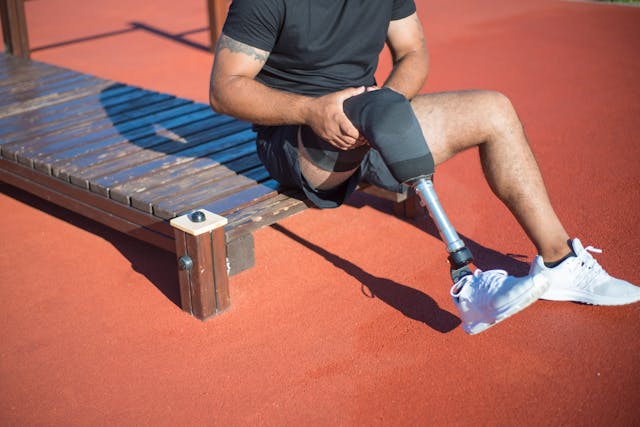
Vinod, a 28-year-old delivery agent from Ahmedabad, lost his right leg below the knee in a train accident. With no formal employment benefits and a family to support, his biggest worry was how soon he could start working again. He came to Robobionics with one clear goal: to get back on the road.
We began his immediate fit prosthetic process within eight days of surgery, starting with pressure-free fittings and a training plan designed to help him walk and ride a scooter again. Vinod’s recovery was driven by purpose. He practiced every day, even on tough days. With the support of our therapists and his family, he transitioned to a custom prosthetic within two months.
Three months after surgery, he was back delivering packages, managing routes, and earning for his family. Vinod is now one of our most active peer mentors, helping other young amputees rebuild their lives. “The prosthetic gave me strength, but starting early gave me courage,” he says. “I didn’t just get my leg back—I got my confidence.”
Priya’s Path to Independence: A New Chapter at Her Own Pace
Priya, a 26-year-old graphic designer from Bengaluru, underwent a below-knee amputation after a prolonged infection following an injury. She had always been independent, living alone in the city, building her career, and enjoying a fast-paced creative life. After surgery, she moved back in with her parents and began doubting if she could ever return to her old lifestyle.
When Priya came to Robobionics, she was quiet and guarded. She listened carefully but didn’t say much. What she did say was clear: “I just want to feel like myself again.” We worked closely with her, starting with a soft, adjustable post-operative prosthetic that allowed for a gentle reintroduction to movement. In the beginning, she only wore it for short periods. No pressure. Just progress at her pace.
Over the next few weeks, Priya grew more confident—not just physically, but in herself. She started working from home again. She designed standing up. She walked to the corner café with a friend. Slowly, she moved back to her own place and resumed her studio job. Today, Priya uses a lightweight, responsive transtibial prosthetic. “Getting fitted early gave me time to grow with the prosthetic,” she says. “It didn’t feel like I was catching up. It felt like I was building something.”
Arvind’s Second Chance at Farming
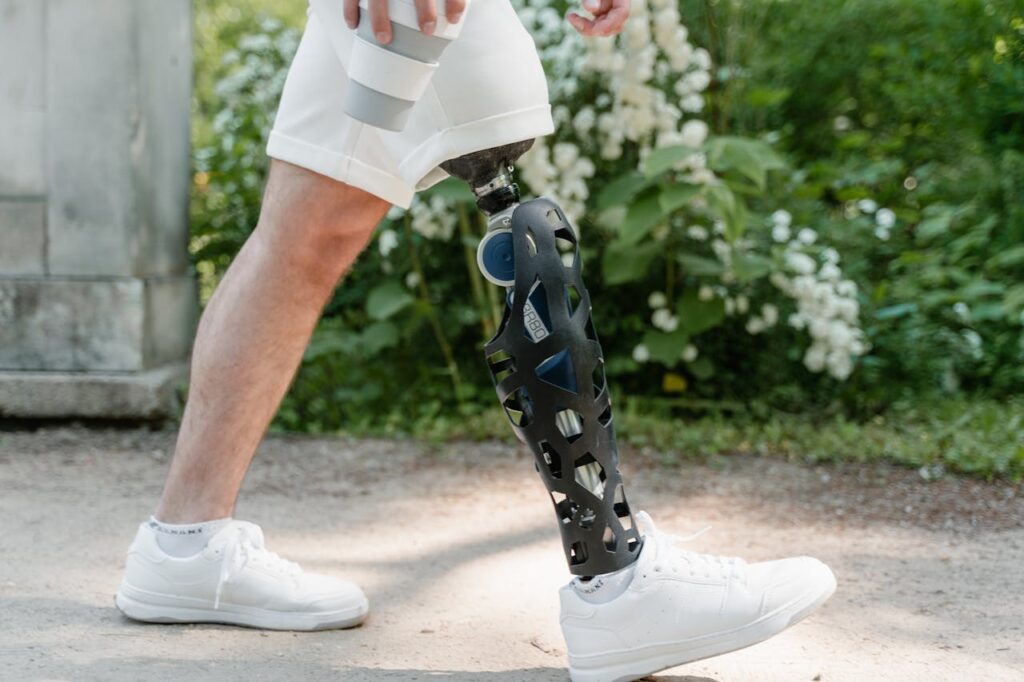
Arvind, a 51-year-old farmer from a village near Nashik, lost his leg above the knee after a severe tractor accident. For someone who lived off the land and worked outdoors every day, the thought of being unable to walk, bend, or lift again left him devastated. He didn’t see how a prosthetic could ever fit into the kind of life he lived.
His son brought him to a Robobionics partner clinic after learning about early prosthetic fitting through a local health camp. Arvind was hesitant. He had never even seen someone wear a prosthetic in his village. But after seeing videos of others like him walking with support, he agreed to try.
We started with a basic transfemoral post-operative prosthetic that allowed for slow, supported walking on flat surfaces. Within weeks, Arvind was walking with a stick around his home. A month later, he was back checking his fields, meeting workers, and tending to small tasks. Eventually, we upgraded him to a durable, outdoor-friendly definitive prosthetic. “I didn’t think I could walk again, let alone work,” he told us. “But starting early gave me back my field. It gave me back my role as a farmer.”
Sana’s Comeback on the Track
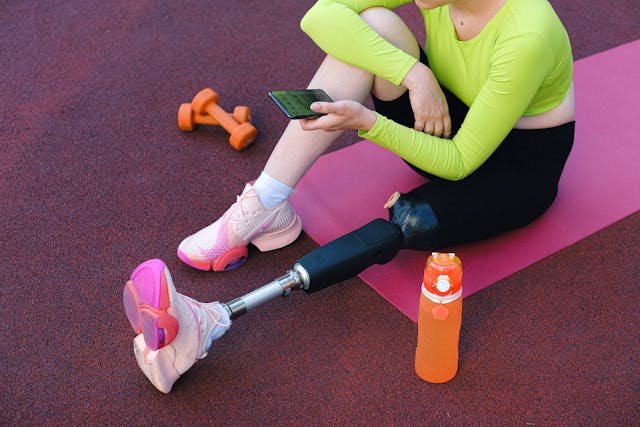
Sana, a 19-year-old athlete from Lucknow, lost her leg below the knee in a car crash during her first year of college. She was a sprinter with dreams of competing nationally. After her surgery, she refused to speak to anyone for days. For her, movement wasn’t just about getting from one place to another—it was her identity.
Her coach reached out to Robobionics. We visited Sana at the hospital and didn’t speak about running. We spoke about walking. About getting dressed on her own. About feeling steady again. A few weeks later, she tried on her post-operative prosthetic. Her eyes lit up—not because she was running again, but because she could stand without help.
Over the next few months, Sana trained with a rehab team, focusing first on walking, then jogging, and finally sprinting again. We helped her transition to a performance prosthetic built for running. Today, Sana competes in para-athletics and trains young amputees in her city. “The early fitting didn’t just give me mobility,” she says. “It reminded me that I was still an athlete. Still a fighter.”
Conclusion
Each of these stories is different. Different cities. Different ages. Different causes of amputation. But all share one common truth: early prosthetic use made a meaningful difference in the way their recovery unfolded. It gave people the ability to move sooner, heal better, and feel stronger—not just physically, but emotionally.
At Robobionics, we believe that the recovery journey starts the moment you say yes to moving again. With the right support, the right prosthetic, and a team that listens, you can rewrite your story—no matter where it begins.
If you or your loved one is preparing for life after amputation, we’re here to help. Book a free consultation with Robobionics today and take the first step toward your own success story—one that begins with care, movement, and hope.



